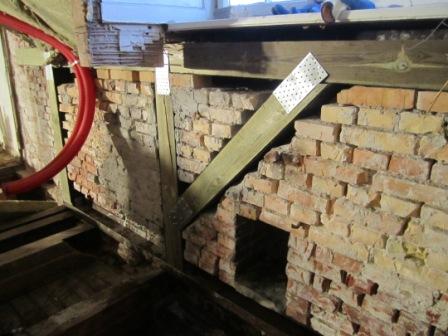

Repair and energy optimisation
Building Type 1: 1850-1890
Experience gained from major renovation works on older properties shows that it is common to discover damage in the roof structure and adjoining storey partition that was previously unknown. This often results in major restorative work, meaning that the renovation becomes far more extensive than planned and delays can occur in a scheduled building process as a result.
In order to prevent damage to the inbuilt or underlying structures, it is necessary to carry out continuous maintenance of a building’s envelope. If the damage has already occurred, it is important to establish the cause and assess the extent. It is especially important to establish the presence of any dry rot or insect infestation and the residual strength of the structures.
The damage repairs are most frequently carried out by reconstructing the degraded parts of structures using new materials of the same type – though occasionally they will be chemically treated in the event of dry rot or if the structures are particularly susceptible to future damage. More information about this is available from BYG-ERFA: Dry rot and insect damage
If the structures form a part of the building envelope that has implications for the building’s energy consumption, there is currently a general requirement that the structure’s energy efficiency be improved, for example, with the use of insulating materials. It is important that the retrofitting of such insulation be carried out with care and that any ventilation needs of the structure are not overlooked, thereby causing new damage to the building.
The GODE TAGE | DK and BvB | DK websites contain information on a range of good insulation solutions for attics as well as general recommendations for roofs, based on many years of accumulated experience from publicly funded building renovation projects.
Photos: BvB – Building redevelopments and the Danish Building Defects Fund (Byggeskadefonden)